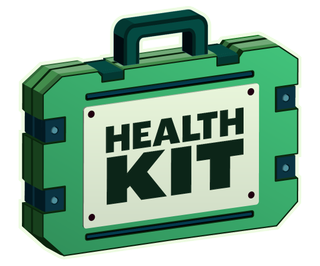Ask a Medic: Should I use a wrist rest with my keyboard and mouse?
Also, a verdict on whether or not it's a good idea to tilt your keyboard.
Some gaming keyboards and mouse pads have built in wrist rests. Is it a good idea to fit out my desk with all that padding?
Yes, with an asterisk!
A wrist rest attachment is incredibly useful, both for a keyboard and for a mousepad. It lets you keep your wrist in a neutral position and provides support for the forearm, meaning less stabilizing work is required of those muscles.

Caitlin McGee is a physical therapist with a background in neuroscience and exercise/sport science. She is the co-owner and performance and esports medicine director of 1HP, a company that provides health and performance services to esports players, teams, and organizations. She has been working in esports medicine for 6 years.
What you don't want is to rest your actual wrist on the wrist rest (hence the asterisk). The inner wrist has no bony or muscular protection over the carpal tunnel and Guyon's canal, which are the pathways through which nerves and tendons enter the hand. The "roof" of those tunnels is formed by a lightweight, very flexible band of tissue, called a retinaculum. Any pressure on that area is pressure on the tendons and nerves. If you rest the wrist itself on your wrist rest, you are putting compressive stress on an area that can't really take it.
What you do want is to rest the heel of the hand, which has the thick thenar and hypothenar eminence muscles and the solid metacarpal bones to protect the smaller, more delicate structures, on the wrist rest. A cushioned wrist rest is preferable to a solid one to address pressure-related concerns as well.
Is a wrist rest essential for good ergonomics? Not necessarily. It’s possible to have perfectly good ergonomics without a wrist rest. However, the more points of adjustability you have in your setup, the easier a time you’ll have keeping good posture and positioning. A wrist rest might not be required, but can make good ergonomics a little bit easier.
Should I tilt my keyboard toward me with the little legs?
To answer this question, we need to go back to wrist anatomy.
The biggest gaming news, reviews and hardware deals
Keep up to date with the most important stories and the best deals, as picked by the PC Gamer team.
The front side of your wrist has very little protection (in terms of bones and muscles) on it, as we discussed above. In the same way that direct pressure on the wrist causes compressive strain, prolonged wrist extension also places pressure on those structures.

Health Kit is PC Gamer's coverage of health, ergonomics, and wellness, which is currently being produced with support from AMD.
Your wrist, when relaxed, sits in a mild amount of extension, about 10-15 degrees. It's also perfectly fine to stretch the muscles of your forearm by pushing the wrist into extension. But sitting in more extension than that 10-15 degrees for long periods of time does cause compressive strain to build up.
All of this is to say that when it comes to your keyboard, you want it to be flat or to even to have some amount of negative tilt, or tilt away from you. If your keyboard is tilted towards you, it will push you into a greater degree of extension.
The bottom line
Here are the basic rules to follow: Don't put pressure on the front of your wrist by pushing into it, and don't put pressure on the front of your wrist by extending it too much. If your setup doesn’t force you to do either of those things, you're in a good place.
For more ergonomics tips, see our guide to PC gaming ergonomics.
Most Popular

